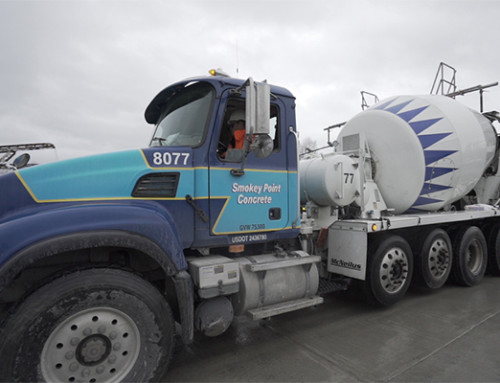The Herald Article, February 15, 1996
A Concrete Lesson by Eric Stevick
Students soak up geology from rock’s point of view
Arlington – Somewhere between the giant jaw crusher and 13-foot-high dump truck, Kent Prairie Elementary School fourth-graders learned a little more about geology Wednesday.
A field trip to Smokey Point Concrete Inc., on the north fork of the Stillaguamish River capped earth sciences studies that included lessons about fossils, geologic eras and the layers of earth. Students also learned to identify rocks and their properties.
Make no mistake, however. Climbing all over the humongous machinery with tires taller than they were was the highlight for many students.
“I liked the dump truck the best”, student Nick Williams said. “It was so large, it was hard to believe.”
“That’s just a big Tonka (toy truck) that actually drives,” said Darrell “Woody” Wood, shop manager.
Students also got to watch large machinery known as a jaw crusher turn 10-pound rocks from the Ice Age into two-pound rocks, and a cone crusher pulverize the two-pound rocks into crushed rock.
Along the way, the students learned about the relevance and prevalence of rock and sand in their daily lives.
Consider these tidbits from the Washington Aggregate and Concrete Association:
- Roughly 220 tons of aggregate, about the weight of two whales, are used to build the average Western Washington home.
- Each lane-mile of a typical four-lane county road requires 8,500 tons of sand, gravel and crushed rock.
- From roads to buildings, each year almost 1 ½ cubic yards of concrete, 1 ¼ cubic yards of asphalt and 14 tons of sand and gravel is used per capita – about the weight of two elephants. One cubic yard of concrete weighs 4,000 pounds, or two tons. The figures were based on statewide consumption of sand, gravel, concrete and asphalt.
Mark Crawford, President of Smokey Point Concrete Inc., said the company and state association were looking for a chance to become involved in schools.
They worked closely with elementary school science teachers for a year to devise a curriculum, said Jennifer Matheson, a science lab specialist at Kent Prairie.
Among other things, students made their own plaster-of-Paris fossils, started rock collections, and learned to identify limestone through fizz tests, she said.
Young Nick Williams and other students picked up on one point often misunderstood by adults.
Concrete and cement are not the same.
Cement is the powder that bonds concrete.
Concrete is the product of sand, gravel, cement and water.
